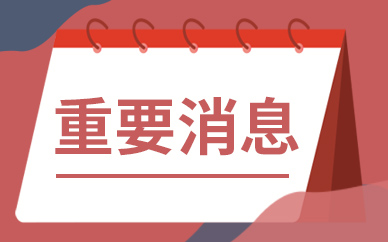JavaCV的摄像头实战之十四:口罩检测
2023-07-04 21:12:47 来源:博客园
 【资料图】
【资料图】
本篇概览本文是《JavaCV的摄像头实战》系列的第十四篇,如标题所说,今天的功能是检测摄像头内的人是否带了口罩,把检测结果实时标注在预览窗口,如下图所示:整个处理流程如下,实现口罩检测的关键是将图片提交到百度AI开放平台,然后根据平台返回的结果在本地预览窗口标识出人脸位置,以及此人是否带了口罩:问题提前告知依赖云平台处理业务的一个典型问题,就是处理速度受限首先,如果您在百度AI开放平台注册的账号是个人类型,那么免费的接口调用会被限制到一秒钟两次,如果是企业类型账号,该限制是十次其次,经过实测,一次人脸检测接口耗时300ms以上最终,实际上一秒钟只能处理两帧,这样的效果在预览窗口展现出来,就只能是幻灯片效果了(低于每秒十五帧就能感受到明显的卡顿)因此,本文只适合基本功能展示,无法作为实际场景的解决方案关于百度AI开放平台为了正常使用百度AI开放平台的服务,您需要完成一些注册和申请操作,详情请参考《最简单的人脸检测(免费调用百度AI开放平台接口)》现在,如果您完成了百度AI开放平台的注册和申请,那么,现在手里应该有可用的access_token,那么现在可以开始编码了编码:添加依赖库本文继续使用《JavaCV的摄像头实战之一:基础》创建的simple-grab-push工程首先是在pom.xml中增加okhttp和jackson依赖,分别用于网络请求和JSON解析:这里分类和汇总了欣宸的全部原创(含配套源码):https://github.com/zq2599/blog_demos
com.squareup.okhttp3 okhttp 3.10.0 com.fasterxml.jackson.core jackson-databind 2.11.0 package com.bolingcavalry.grabpush.bean.request;import com.fasterxml.jackson.annotation.JsonProperty;import lombok.Data;/** * @author willzhao * @version 1.0 * @description 请求对象 * @date 2022/1/1 16:21 */@Datapublic class FaceDetectRequest { // 图片信息(总数据大小应小于10M),图片上传方式根据image_type来判断 String image; // 图片类型 // BASE64:图片的base64值,base64编码后的图片数据,编码后的图片大小不超过2M; // URL:图片的 URL地址( 可能由于网络等原因导致下载图片时间过长); // FACE_TOKEN: 人脸图片的唯一标识,调用人脸检测接口时,会为每个人脸图片赋予一个唯一的FACE_TOKEN,同一张图片多次检测得到的FACE_TOKEN是同一个。 @JsonProperty("image_type") String imageType; // 包括age,expression,face_shape,gender,glasses,landmark,landmark150,quality,eye_status,emotion,face_type,mask,spoofing信息 //逗号分隔. 默认只返回face_token、人脸框、概率和旋转角度 @JsonProperty("face_field") String faceField; // 最多处理人脸的数目,默认值为1,根据人脸检测排序类型检测图片中排序第一的人脸(默认为人脸面积最大的人脸),最大值120 @JsonProperty("max_face_num") int maxFaceNum; // 人脸的类型 // LIVE表示生活照:通常为手机、相机拍摄的人像图片、或从网络获取的人像图片等 // IDCARD表示身份证芯片照:二代身份证内置芯片中的人像照片 // WATERMARK表示带水印证件照:一般为带水印的小图,如公安网小图 // CERT表示证件照片:如拍摄的身份证、工卡、护照、学生证等证件图片 // 默认LIVE @JsonProperty("face_type") String faceType; // 活体控制 检测结果中不符合要求的人脸会被过滤 // NONE: 不进行控制 // LOW:较低的活体要求(高通过率 低攻击拒绝率) // NORMAL: 一般的活体要求(平衡的攻击拒绝率, 通过率) // HIGH: 较高的活体要求(高攻击拒绝率 低通过率) // 默认NONE @JsonProperty("liveness_control") String livenessControl; // 人脸检测排序类型 // 0:代表检测出的人脸按照人脸面积从大到小排列 // 1:代表检测出的人脸按照距离图片中心从近到远排列 // 默认为0 @JsonProperty("face_sort_type") int faceSortType;}package com.bolingcavalry.grabpush.bean.response;import com.fasterxml.jackson.annotation.JsonProperty;import lombok.Data;import lombok.ToString;import java.io.Serializable;import java.util.List;@Data@ToStringpublic class FaceDetectResponse implements Serializable { // 返回码 @JsonProperty("error_code") String errorCode; // 描述信息 @JsonProperty("error_msg") String errorMsg; // 返回的具体内容 Result result; @Data public static class Result { // 人脸数量 @JsonProperty("face_num") private int faceNum; // 每个人脸的信息 @JsonProperty("face_list") List faceList; /** * @author willzhao * @version 1.0 * @description 检测出来的人脸对象 * @date 2022/1/1 16:03 */ @Data public static class Face { // 位置 Location location; // 是人脸的置信度 @JsonProperty("face_probability") double face_probability; // 口罩 Mask mask; /** * @author willzhao * @version 1.0 * @description 人脸在图片中的位置 * @date 2022/1/1 16:04 */ @Data public static class Location { double left; double top; double width; double height; double rotation; } /** * @author willzhao * @version 1.0 * @description 口罩对象 * @date 2022/1/1 16:11 */ @Data public static class Mask { int type; double probability; } } }} package com.bolingcavalry.grabpush.extend;import com.bolingcavalry.grabpush.bean.request.FaceDetectRequest;import com.bolingcavalry.grabpush.bean.response.FaceDetectResponse;import com.fasterxml.jackson.databind.DeserializationFeature;import com.fasterxml.jackson.databind.ObjectMapper;import okhttp3.*;import java.io.IOException;/** * @author willzhao * @version 1.0 * @description 百度云服务的调用 * @date 2022/1/1 11:06 */public class BaiduCloudService { OkHttpClient client = new OkHttpClient(); static final MediaType JSON = MediaType.parse("application/json; charset=utf-8"); static final String URL_TEMPLATE = "https://aip.baidubce.com/rest/2.0/face/v3/detect?access_token=%s"; String token; ObjectMapper mapper = new ObjectMapper(); public BaiduCloudService(String token) { this.token = token; // 重要:反序列化的时候,字符的字段如果比类的字段多,下面这个设置可以确保反序列化成功 mapper.disable(DeserializationFeature.FAIL_ON_UNKNOWN_PROPERTIES); } /** * 检测指定的图片 * @param imageBase64 * @return */ public FaceDetectResponse detect(String imageBase64) { // 请求对象 FaceDetectRequest faceDetectRequest = new FaceDetectRequest(); faceDetectRequest.setImageType("BASE64"); faceDetectRequest.setFaceField("mask"); faceDetectRequest.setMaxFaceNum(6); faceDetectRequest.setFaceType("LIVE"); faceDetectRequest.setLivenessControl("NONE"); faceDetectRequest.setFaceSortType(0); faceDetectRequest.setImage(imageBase64); FaceDetectResponse faceDetectResponse = null; try { // 用Jackson将请求对象序列化成字符串 String jsonContent = mapper.writeValueAsString(faceDetectRequest); // RequestBody requestBody = RequestBody.create(JSON, jsonContent); Request request = new Request .Builder() .url(String.format(URL_TEMPLATE, token)) .post(requestBody) .build(); Response response = client.newCall(request).execute(); String rawRlt = response.body().string(); faceDetectResponse = mapper.readValue(rawRlt, FaceDetectResponse.class); } catch (IOException ioException) { ioException.printStackTrace(); } return faceDetectResponse; }}package com.bolingcavalry.grabpush.extend;import org.bytedeco.javacv.Frame;import org.bytedeco.javacv.OpenCVFrameConverter;import org.bytedeco.opencv.opencv_core.*;import org.bytedeco.opencv.opencv_objdetect.CascadeClassifier;import static org.bytedeco.opencv.global.opencv_core.CV_8UC1;import static org.bytedeco.opencv.global.opencv_imgproc.*;/** * @author willzhao * @version 1.0 * @description 检测工具的通用接口 * @date 2021/12/5 10:57 */public interface DetectService { /** * 根据传入的MAT构造相同尺寸的MAT,存放灰度图片用于以后的检测 * @param src 原始图片的MAT对象 * @return 相同尺寸的灰度图片的MAT对象 */ static Mat buildGrayImage(Mat src) { return new Mat(src.rows(), src.cols(), CV_8UC1); } /** * 检测图片,将检测结果用矩形标注在原始图片上 * @param classifier 分类器 * @param converter Frame和mat的转换器 * @param rawFrame 原始视频帧 * @param grabbedImage 原始视频帧对应的mat * @param grayImage 存放灰度图片的mat * @return 标注了识别结果的视频帧 */ static Frame detect(CascadeClassifier classifier, OpenCVFrameConverter.ToMat converter, Frame rawFrame, Mat grabbedImage, Mat grayImage) { // 当前图片转为灰度图片 cvtColor(grabbedImage, grayImage, CV_BGR2GRAY); // 存放检测结果的容器 RectVector objects = new RectVector(); // 开始检测 classifier.detectMultiScale(grayImage, objects); // 检测结果总数 long total = objects.size(); // 如果没有检测到结果,就用原始帧返回 if (total<1) { return rawFrame; } // 如果有检测结果,就根据结果的数据构造矩形框,画在原图上 for (long i = 0; i < total; i++) { Rect r = objects.get(i); int x = r.x(), y = r.y(), w = r.width(), h = r.height(); rectangle(grabbedImage, new Point(x, y), new Point(x + w, y + h), Scalar.RED, 1, CV_AA, 0); } // 释放检测结果资源 objects.close(); // 将标注过的图片转为帧,返回 return converter.convert(grabbedImage); } /** * 初始化操作,例如模型下载 * @throws Exception */ void init() throws Exception; /** * 得到原始帧,做识别,添加框选 * @param frame * @return */ Frame convert(Frame frame); /** * 释放资源 */ void releaseOutputResource();}package com.bolingcavalry.grabpush.extend;import com.bolingcavalry.grabpush.bean.response.FaceDetectResponse;import lombok.extern.slf4j.Slf4j;import org.bytedeco.javacpp.Loader;import org.bytedeco.javacv.Frame;import org.bytedeco.javacv.Java2DFrameConverter;import org.bytedeco.javacv.OpenCVFrameConverter;import org.bytedeco.opencv.opencv_core.Mat;import org.bytedeco.opencv.opencv_core.Point;import org.bytedeco.opencv.opencv_core.Rect;import org.bytedeco.opencv.opencv_core.Scalar;import org.bytedeco.opencv.opencv_objdetect.CascadeClassifier;import org.opencv.face.Face;import sun.misc.BASE64Encoder;import javax.imageio.ImageIO;import java.awt.image.BufferedImage;import java.io.ByteArrayOutputStream;import java.io.File;import java.io.IOException;import java.net.URL;import java.util.List;import static org.bytedeco.opencv.global.opencv_imgproc.*;import static org.bytedeco.opencv.global.opencv_imgproc.CV_AA;/** * @author willzhao * @version 1.0 * @description 音频相关的服务 * @date 2021/12/3 8:09 */@Slf4jpublic class BaiduCloudDetectService implements DetectService { /** * 每一帧原始图片的对象 */ private Mat grabbedImage = null; /** * 百度云的token */ private String token; /** * 图片的base64字符串 */ private String base64Str; /** * 百度云服务 */ private BaiduCloudService baiduCloudService; private OpenCVFrameConverter.ToMat openCVConverter = new OpenCVFrameConverter.ToMat(); private Java2DFrameConverter java2DConverter = new Java2DFrameConverter(); private OpenCVFrameConverter.ToMat converter = new OpenCVFrameConverter.ToMat(); private BASE64Encoder encoder = new BASE64Encoder(); /** * 构造方法,在此指定模型文件的下载地址 * @param token */ public BaiduCloudDetectService(String token) { this.token = token; } /** * 百度云服务对象的初始化 * @throws Exception */ @Override public void init() throws Exception { baiduCloudService = new BaiduCloudService(token); } @Override public Frame convert(Frame frame) { // 将原始帧转成base64字符串 base64Str = frame2Base64(frame); // 记录请求开始的时间 long startTime = System.currentTimeMillis(); // 交给百度云进行人脸和口罩检测 FaceDetectResponse faceDetectResponse = baiduCloudService.detect(base64Str); // 如果检测失败,就提前返回了 if (null==faceDetectResponse || null==faceDetectResponse.getErrorCode() || !"0".equals(faceDetectResponse.getErrorCode())) { String desc = ""; if (null!=faceDetectResponse) { desc = String.format(",错误码[%s],错误信息[%s]", faceDetectResponse.getErrorCode(), faceDetectResponse.getErrorMsg()); } log.error("检测人脸失败", desc); // 提前返回 return frame; } log.info("检测耗时[{}]ms,结果:{}", (System.currentTimeMillis()-startTime), faceDetectResponse); // 如果拿不到检测结果,就返回原始帧 if (null==faceDetectResponse.getResult() || null==faceDetectResponse.getResult().getFaceList()) { log.info("未检测到人脸"); return frame; } // 取出百度云的检测结果,后面会逐个处理 List list = faceDetectResponse.getResult().getFaceList(); FaceDetectResponse.Result.Face face; FaceDetectResponse.Result.Face.Location location; String desc; Scalar color; int pos_x; int pos_y; // 如果有检测结果,就根据结果的数据构造矩形框,画在原图上 for (int i = 0; i < list.size(); i++) { face = list.get(i); // 每张人脸的位置 location = face.getLocation(); int x = (int)location.getLeft(); int y = (int)location.getHeight(); int w = (int)location.getWidth(); int h = (int)location.getHeight(); // 口罩字段的type等于1表示带口罩,0表示未带口罩 if (1==face.getMask().getType()) { desc = "Mask"; color = Scalar.GREEN; } else { desc = "No mask"; color = Scalar.RED; } // 在图片上框出人脸 rectangle(grabbedImage, new Point(x, y), new Point(x + w, y + h), color, 1, CV_AA, 0); // 人脸标注的横坐标 pos_x = Math.max(x-10, 0); // 人脸标注的纵坐标 pos_y = Math.max(y-10, 0); // 给人脸做标注,标注是否佩戴口罩 putText(grabbedImage, desc, new Point(pos_x, pos_y), FONT_HERSHEY_PLAIN, 1.5, color); } // 将标注过的图片转为帧,返回 return converter.convert(grabbedImage); } /** * 程序结束前,释放人脸识别的资源 */ @Override public void releaseOutputResource() { if (null!=grabbedImage) { grabbedImage.release(); } } private String frame2Base64(Frame frame) { grabbedImage = converter.convert(frame); BufferedImage bufferedImage = java2DConverter.convert(openCVConverter.convert(grabbedImage)); ByteArrayOutputStream bStream = new ByteArrayOutputStream(); try { ImageIO.write(bufferedImage, "png", bStream); } catch (IOException e) { throw new RuntimeException("bugImg读取失败:"+e.getMessage(),e); } return encoder.encode(bStream.toByteArray()); }} protected CanvasFrame previewCanvas/** * 检测工具接口 */ private DetectService detectService;/** * 不同的检测工具,可以通过构造方法传入 * @param detectService */ public PreviewCameraWithBaiduCloud(DetectService detectService) { this.detectService = detectService; }@Override protected void initOutput() throws Exception { previewCanvas = new CanvasFrame("摄像头预览", CanvasFrame.getDefaultGamma() / grabber.getGamma()); previewCanvas.setDefaultCloseOperation(JFrame.EXIT_ON_CLOSE); previewCanvas.setAlwaysOnTop(true); // 检测服务的初始化操作 detectService.init(); }@Override protected void output(Frame frame) { // 原始帧先交给检测服务处理,这个处理包括物体检测,再将检测结果标注在原始图片上, // 然后转换为帧返回 Frame detectedFrame = detectService.convert(frame); // 预览窗口上显示的帧是标注了检测结果的帧 previewCanvas.showImage(detectedFrame); }@Override protected void releaseOutputResource() { if (null!= previewCanvas) { previewCanvas.dispose(); } // 检测工具也要释放资源 detectService.releaseOutputResource(); }@Override protected int getInterval() { return 0; }public static void main(String[] args) { String token = "21.xxxxxxxxxxxxxxxxxxxxxxxxxxxxxxxx.xxxxxxx.xxxxxxxxxx.xxxxxx-xxxxxxxx"; new PreviewCameraWithBaiduCloud(new BaiduCloudDetectService(token)).action(1000); }运行PreviewCameraWithBaiduCloud的main方法,请群众演员出现在摄像头前面,此时不戴口罩,可见人脸上是红色字体和矩形框:
让群众演员戴上口罩,再次出现在摄像头前面,这次检测到了口罩,显示了绿色标注和矩形框:
实际体验中,由于一秒钟最多只有两帧,在预览窗口展示时完全是幻灯片效果,惨不忍睹...
本篇博客使用了群众演员两张照片,所以被他领走了两份盒饭,欣宸很心疼...
至此,基于JavaCV和百度AI开放平台实现的口罩检测功能已完成,希望您继续关注《JavaCV的摄像头实战》系列,之后的实战更精彩
欢迎关注博客园:程序员欣宸学习路上,你不孤单,欣宸原创一路相伴...
标签:




